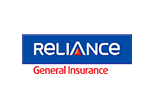Comprehensive Vs Third Party Insurance What’s The Difference?
Comprehensive Vs Third Party Insurance What’s The Difference?
As we know, no one can control uncertain events in life, and one of the uncertainties associated with the vehicle is an accident; it may harm either the party itself or a third party i.e. other vehicle with whom accidents occur and sometimes both. It is obvious that if any kind of accident occurs, it will most probably damage the vehicle of the party as well as the third party.
No one can have control over an accident, but one can protect their financial loss by obtaining required insurance, which can be either comprehensive or third-party insurance.

What Is Comprehensive Insurance?
Comprehensive insurance means the same as its name suggests, i.e. including or dealing with all or nearly all elements or aspects of something.
In comprehensive insurance, the policy covers the risk related to own vehicle damage as well as third-party vehicle damage.
The policies under comprehensive insurance provide coverage against the damage caused to an insured vehicle or third-party vehicle due to accident, fire, theft, or artificial & natural calamities. It also covers accidental third-party property damages or physical injuries caused to the third person due to the insured motor vehicle.
Additionally, a comprehensive insurance policy allows the user to customize their insurance coverage by adding-ons such as engine protector, accessories cover, medical expenses, zero depreciation cover, etc.
What Does Comprehensive Insurance Cover?
A comprehensive car insurance policy provides coverage for the following damages:
· Artificial acts like vandalism, strikes or riots
· Theft, Burglary or Housebreaking
· Damages caused by a bird or an animal or rat bite causing electrical damage
· Accidental damages when the insured car was in transit via roadways, railways, airways, etc
· Fire, self-ignition or explosion of the insured vehicle
· Damages caused by natural disasters like floods, hailstorms, tornadoes, hurricanes, earthquakes, etc.
· Third-party liabilities (death, injury and property damage)
What Is Third-Party Insurance?
In third-party insurance, the policy covers the injuries or damage of the third party that occurred due to the insured car. This insurance provides coverage only for third-party damage and not for self-damage.
As per the Motor Vehicles Act of 1988, every motor vehicle owner must buy at least third-party insurance coverage in India.
What Does Third-Party Insurance Cover?
A third-party policy provides the following coverage:
· Compensation to a third person if they get injured or die due to an accident caused by your car.
· Coverage towards third parties for damaging their property from your car up to Rs 7.5 lakh.
· Compensation to the owner-driver of the insured car in case of accidental death or disability.
The Key Difference Between Comprehensive Insurance & Third-Party Insurance:
|
Aspect |
Comprehensive Insurance |
Third-Party Insurance |
|
Meaning |
As the name suggests, this insurance comprehensively covers own and third-party damage |
This insurance covers only third-party damage. |
|
Legal Requirement |
It is not mandatory to have comprehensive insurance |
It is compulsory to have third-party insurance under the Motor Vehicle Act. |
|
Personal Accident Cover for Policyholder |
Often includes personal accident coverage for the policyholder, providing financial support for medical expenses, disability, or death. |
Typically, it does not include personal accident coverage for the policyholder, but it may cover third parties involved in the accident. |
|
Cost |
This policy premium cost is generally higher than third-party insurance due to the broader coverage provided |
Lower premium costs compared to Comprehensive Insurance. |
|
Suitability |
Ideal for those who want comprehensive protection for their vehicle and personal accident coverage. |
Typically chosen to meet legal requirements; suitable for budget-conscious individuals who accept limited coverage. |
Which Insurance Is Right For You?
When it comes to choosing between Comprehensive and Third Party Car Insurance, multiple factors need to be considered to ensure that the chosen policy actually fulfills the policyholder requirements or not. Key factors in choosing right insurance is as follows:
|
Particulars |
Comprehensive Car Insurance |
Third Party Car Insurance |
|
Vehicle Value |
If you own a new, expensive, or high-value vehicle, Comprehensive Insurance is often the wiser choice. It protects a wide range of risks, such as accidents, theft, or natural disasters. |
If your vehicle is older and its market value has significantly depreciated, Third Party Insurance may be sufficient. |
|
Individual Budget |
If you have the financial capacity to afford higher insurance premiums, Comprehensive Insurance is a suitable choice. |
If you have budget constraints and need to keep insurance costs as low as possible, Third Party Insurance provides basic coverage at a more affordable rate. |
|
Risk Tolerance |
If you prefer to transfer more risk to the insurance company and avoid substantial out-of-pocket expenses, Comprehensive Insurance is recommended. |
If you are risk-tolerant and comfortable taking on more of the financial burden in the event of an accident, you may lean towards Third Party Insurance. |
|
Individual Needs |
If you frequently drive in high-traffic urban areas or face a higher risk of accidents, Comprehensive Insurance can provide peace of mind. |
If you're comfortable with basic coverage and can handle minor expenses, Third Party Insurance may be sufficient. |
Conclusion
The choice between comprehensive insurance and third-party insurance completely depends upon the needs and circumstances of the policyholder. In some cases, having third-party insurance fulfils all their requirements at a low cost, and in other cases, having comprehensive insurance with broader coverage and higher premiums provides peace of mind.
Ultimately, the decision should balance the level of coverage required, budget considerations, risk tolerance, and the specific features of your vehicle to ensure that your chosen plan aligns with your priorities and provides the right balance between protection and affordability.














































